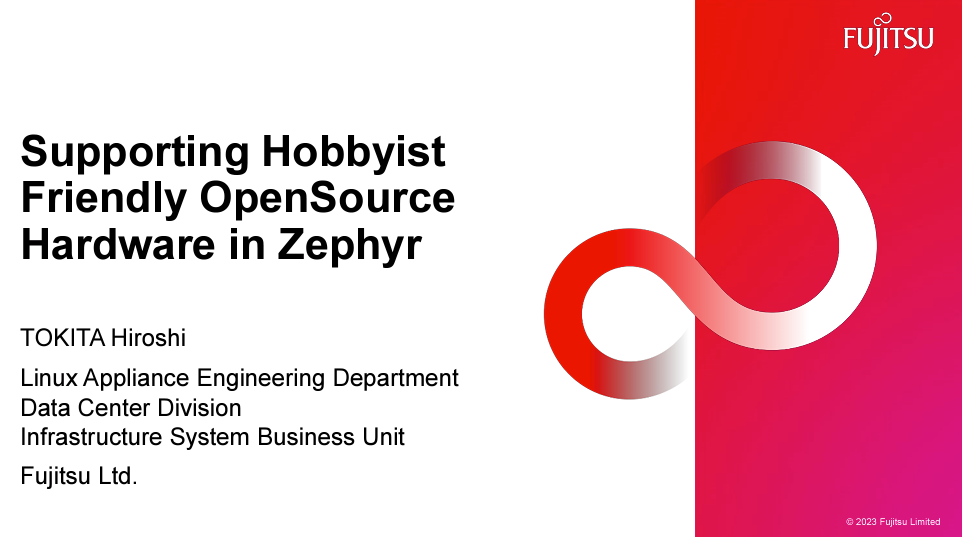
Arduino UNO R4 is a super-nova in open hardware. This is cheap, readily available, and it can use many existing options from third parties and communities. We want to use it with the Zephyr. The Raspberry Pi Pico is another popular board in the electro hobby community. It also use in many open hardware project. I started porting the UNO R4 board. I will report the status. Now, Raspberry Pi Pico gets mostly features support in Zephyr. Today, I talk about PIO, the most recently developed and exciting feature in the Pico. The optional module called the “Shield” has played an essential role in the open hardware ecosystem. Zephyr can handle the “Shield” as a standardized connector. I will show the benefits of connector systems in Zephyr and some difficulties and solutions (proposal) in application to Raspberry Pi Pico. Additionally, I will introduce ArduinoCore for the Zephyr project. Arduino was initially designed for non-programmer development. It provides a unique experience for rapid prototyping, but some must be fit for best practices in embedded development. This project supports a gradual transition besides the growth of the project ‘just an (Arduino) sketch’ to ’embedded system development.’ And At last, I will show some attractive cheap boards that has a RISC-V chip. It may provide a different perspective from the chip that Zephyr mainly supports.
Last week, thousands of attendees participated in Open Source Summit Japan to learn best practices, celebrate technology, discuss what’s next and network with each other. Hiroshi Tokita, Embedded software developer at Fujitsu Ltd., was on-site to present a session, “Supporting Hobbyist Friendly OpenSource Hardware in Zephyr.”
Watch the video below.
Click here to see the presentation: Supporting Hobbyist Friendly OpenSource Hardware in Zephyr
All videos from Open Source Summit Japan can be found here.